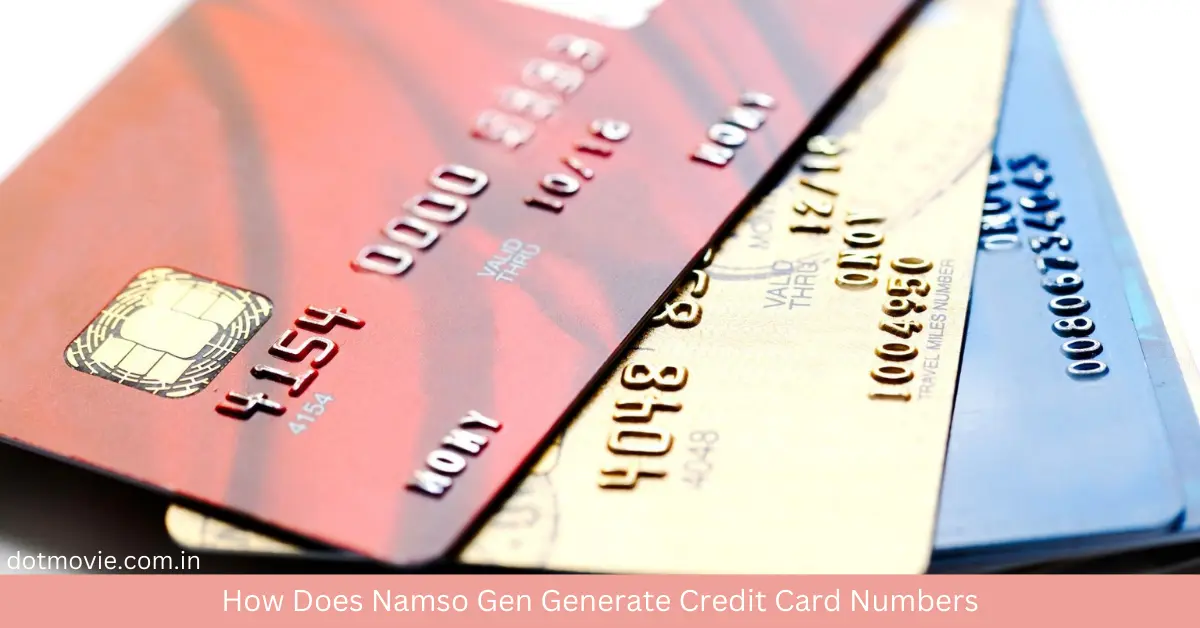
How Does Namso Gen Generate Credit Card Numbers?
Namso Gen, a popular tool among various user groups, has intrigued many for its ability to generate credit card numbers. These numbers mimic the format and structure of genuine credit card numbers but are not tied to actual bank accounts.
In this article, we will explore how Namso Gen works, the principles behind its functionality, and the ethical and legal considerations involved.
What is Namso Gen?
Namso Gen is a credit card generator that creates numbers resembling real credit cards. These numbers adhere to the same structure as legitimate cards, including the appropriate prefixes, lengths, and checksum validations. However, they do not represent real financial instruments and cannot be used for transactions involving real money.
Why is Namso Gen Popular?
Namso Gen is widely used for testing payment systems, fraud prevention mechanisms, and educational purposes. Developers and testers often use such tools to simulate transactions without involving real card details. Its popularity stems from:
- Ease of Use: A simple user interface that requires minimal input.
- Customizability: Allows users to define card issuer prefixes and other parameters.
- Instant Results: Generates card numbers quickly, meeting diverse testing needs.
How Does Namso Gen Work?
Namso Gen relies on mathematical principles and predefined rules used by financial institutions to create legitimate credit card numbers. The generated numbers are synthetic yet valid in format, designed to pass preliminary validation checks.
The key components of Namso Gen’s functionality include:
- Issuer Identification Numbers (IINs)
- Length and Format Rules
- Checksum Validation using the Luhn Algorithm
The Structure of a Credit Card Number
Understanding how Namso Gen generates numbers requires knowledge of the structure of a credit card number. These numbers follow a globally recognized format:
- Issuer Identification Number (IIN): The first 6 digits identify the card issuer, such as Visa, Mastercard, or American Express.
- Account Number: Digits following the IIN represent the unique account within the issuer’s system.
- Checksum (Last Digit): The final digit ensures the entire number is mathematically valid, using the Luhn Algorithm.
What is the Luhn Algorithm?
The Luhn Algorithm is a checksum formula used to validate a variety of identification numbers, including credit cards. It is crucial to the generation and verification of valid card numbers.
Steps in the Luhn Algorithm:
- Starting from the right, double every second digit.
- If doubling results in a number greater than 9, subtract 9 from it.
- Sum all the digits.
- Check if the total is divisible by 10. If yes, the number is valid.
Example Validation:
For the number 4532 6589 3470 1234:
- Double every second digit: 8 3 10 5 12 8 6 3 14 7 0 1 4 3 6 8.
- Subtract 9 where necessary: 8 3 1 5 3 8 6 3 5 7 0 1 4 3 6 8.
- Sum the digits: 70.
- Since 70 is divisible by 10, the number is valid.
How Namso Gen Uses the Luhn Algorithm
Namso Gen employs the Luhn Algorithm to ensure the generated credit card numbers are valid in terms of format. Here’s how it works:
- Input Parameters: Users define the IIN, length, and other optional details.
- Random Generation: The tool fills in the account number randomly while adhering to the defined length.
- Checksum Calculation: The Luhn Algorithm calculates the final digit to ensure the number’s validity.
This process ensures that the generated numbers are structurally accurate and pass initial validation checks.
Common Use Cases for Namso Gen
Namso Gen has several legitimate applications, including:
- Testing Payment Gateways:
Developers use generated numbers to simulate transactions and ensure their systems handle payments correctly. - Training and Education:
Financial institutions and educational programs use Namso Gen for training purposes. - Fraud Prevention Testing:
Security teams simulate scenarios to identify vulnerabilities in fraud detection mechanisms. - Simulation in Non-Commercial Applications:
Generated numbers can be used in demo versions of software without involving actual financial data.
Ethical and Legal Implications
While Namsogen is useful for legitimate purposes, its misuse can lead to serious consequences. Here’s a look at the ethical and legal dimensions:
Ethical Considerations:
- Using generated numbers for unauthorized access or fraudulent activities is unethical.
- Misuse of such tools undermines trust in online systems.
Legal Considerations:
- Laws vary by country, but generating credit card numbers with the intent to defraud is universally illegal.
- Even without malicious intent, using generated numbers on platforms without authorization may breach terms of service.
Is Using Namso Gen Safe?
The safety of using Namso depends on the purpose and context:
- For Testing and Development:
When used in controlled environments, Namso Gen is safe and invaluable for system testing. - For Malicious Activities:
Misuse can expose individuals to legal action and reputational damage. - Risk of Exposure:
Downloading Namso Gen from unverified sources may introduce malware or compromise user data.
Alternatives to Namso Gen for Legitimate Testing
For developers and testers looking for safe alternatives, several tools and services are designed specifically for testing purposes:
- Stripe Test Cards:
Stripe offers a list of test card numbers for use with its payment gateway. - PayPal Sandbox:
Simulate payment transactions using PayPal’s secure testing environment. - Test Cards from Issuers:
Major card issuers often provide test card numbers for developers.
These alternatives ensure compliance with legal and ethical standards while providing reliable results.
Conclusion
Namso Gen is a powerful tool that leverages the mathematical foundations of credit card numbers for various applications. Understanding how it works sheds light on both its utility and its potential risks. While it serves legitimate purposes in testing and education, misuse can lead to significant ethical and legal ramifications.
